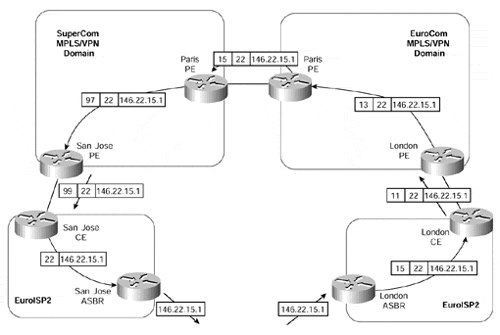Summary
In this chapter, we have seen that when a customer of a service provider's MPLS/VPN backbone is an Internet service provider (ISP), it is imperative that any external routes that need to be advertised between the ISP sites be achieved through multi-hop iBGP sessions. This is necessary so that large volumes of external routes?potentially full Internet routes?do not get advertised toward the MPLS/VPN backbone and between PE-routers within that backbone.
This requirement is achieved through use of the carrier's carrier architecture, which allows LDP/TDP sessions between the CE-router and the PE-router. The carrier's carrier architecture provides several connectivity options, depending on whether MPLS is deployed within the ISP's own sites or whether the ISP is providing a VPN service for its customers.
Although the standard MPLS/VPN architecture will be adequate in many cases, some customer deployments will require a topology that is geographically split, and the need will arise to use different service providers to obtain VPN service. This type of deployment (also called inter-provider VPN) requires that VPN information be exchanged between service providers over MP-eBGP sessions. Again, several deployment options are available, each of which provides full connectivity between customer sites, regardless of whether the customer is an enterprise customer, an ISP, or even another MPLS/VPN service provider.
Figure 14-20. Inter-provider VPN?Multi-hop eBGP Between Customer Sites (Traffic Flow)









